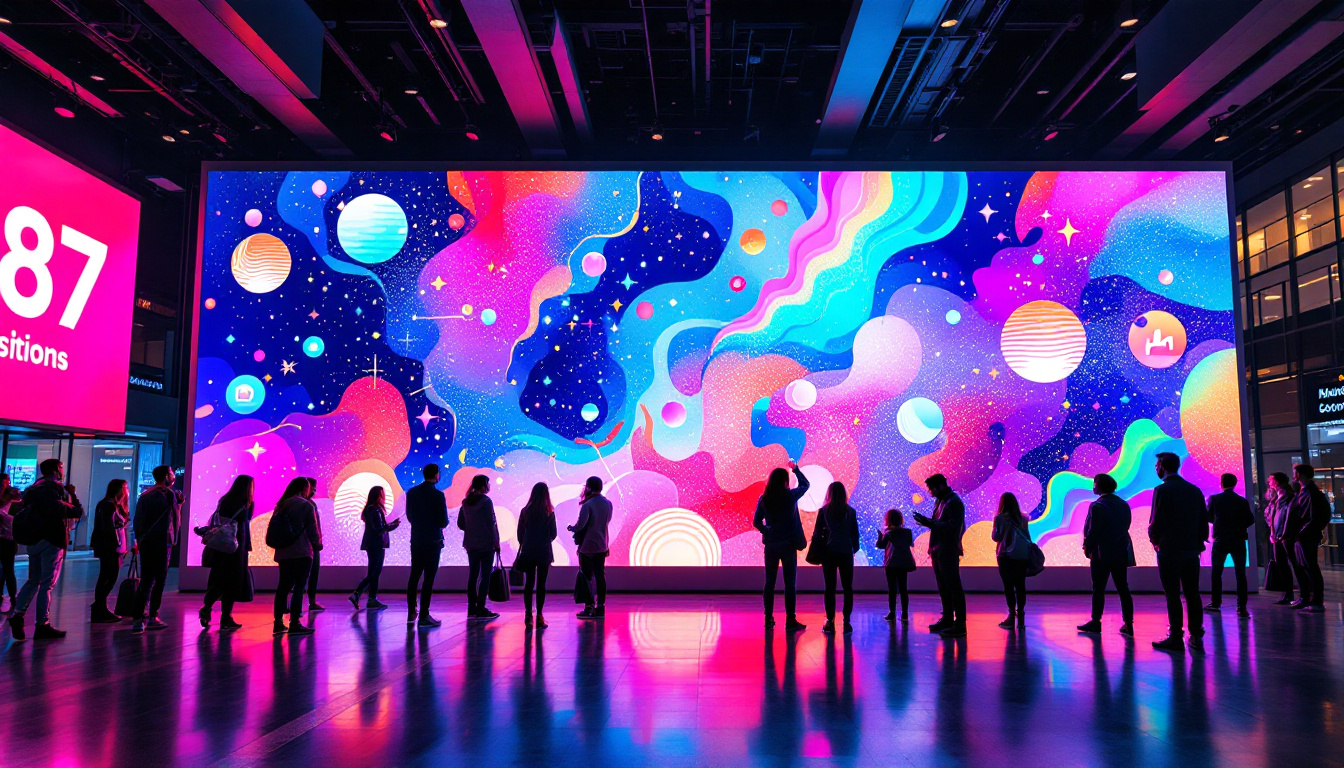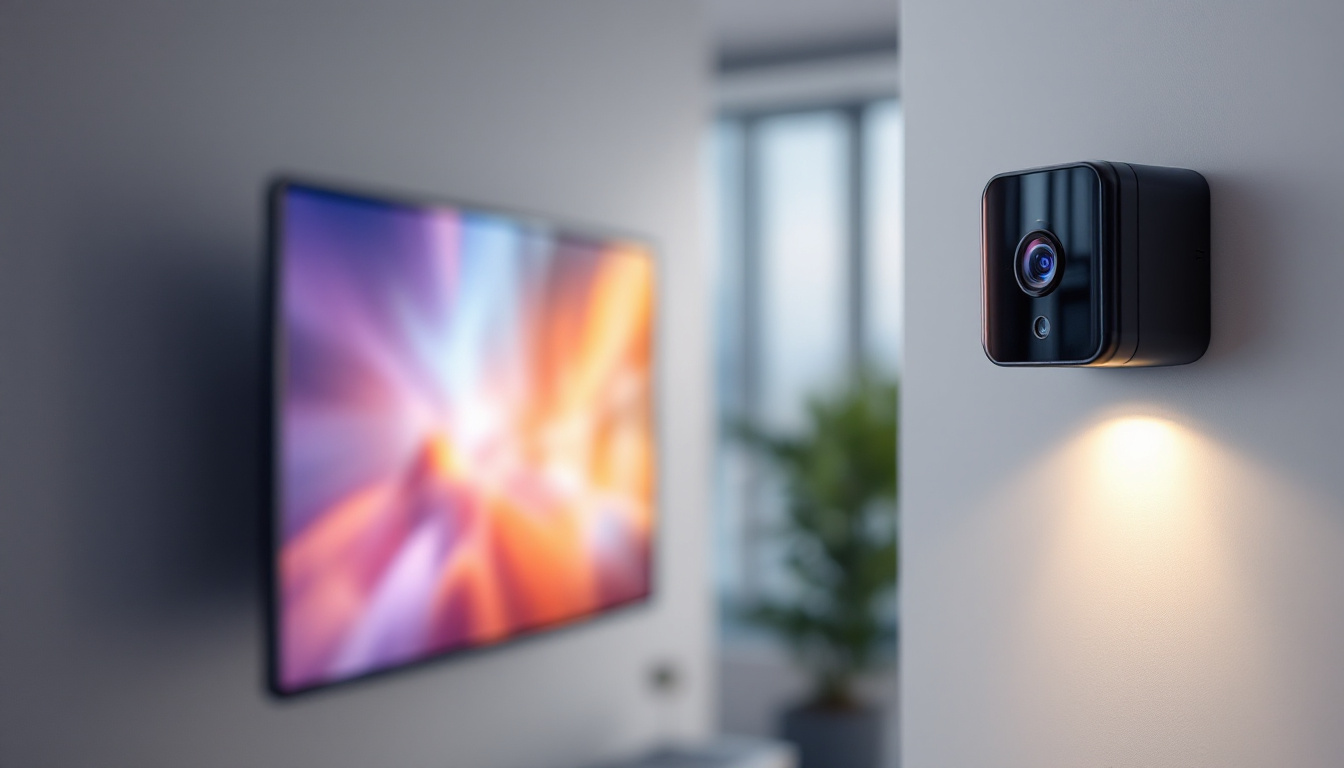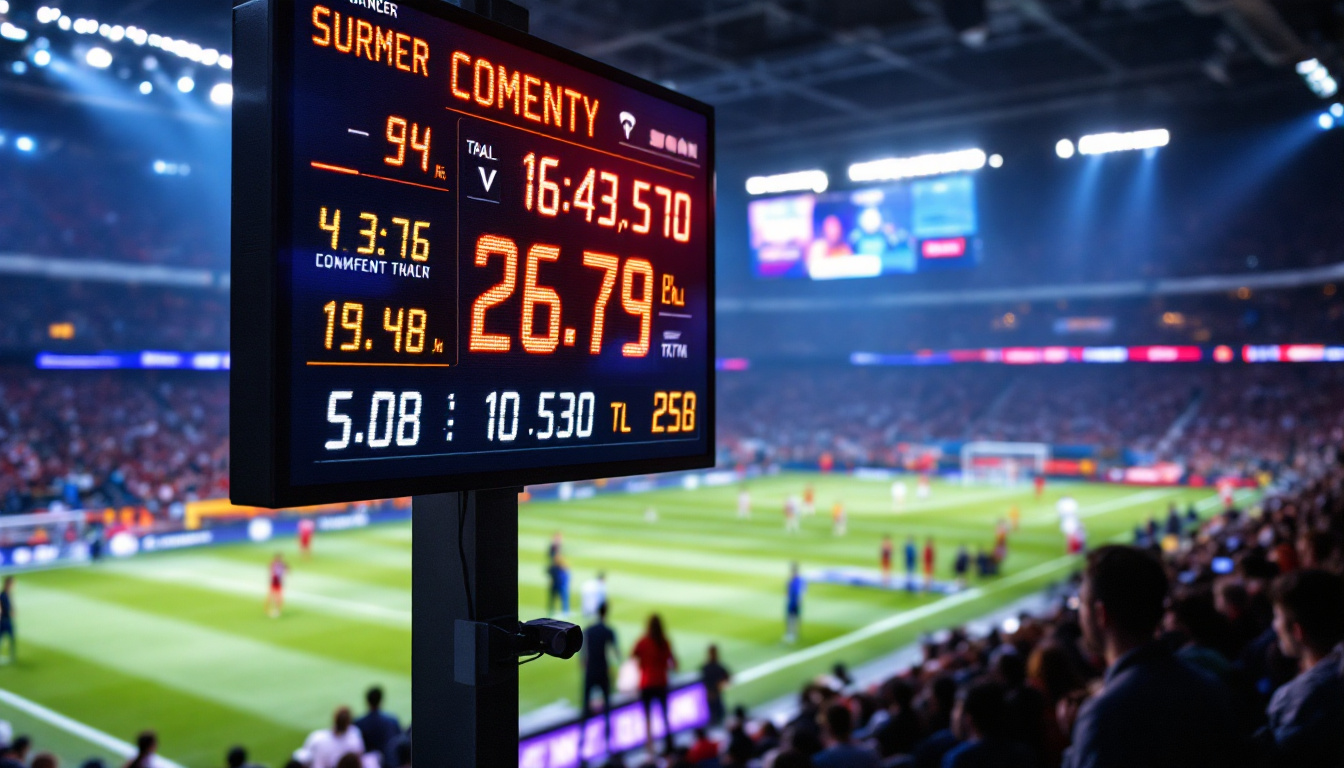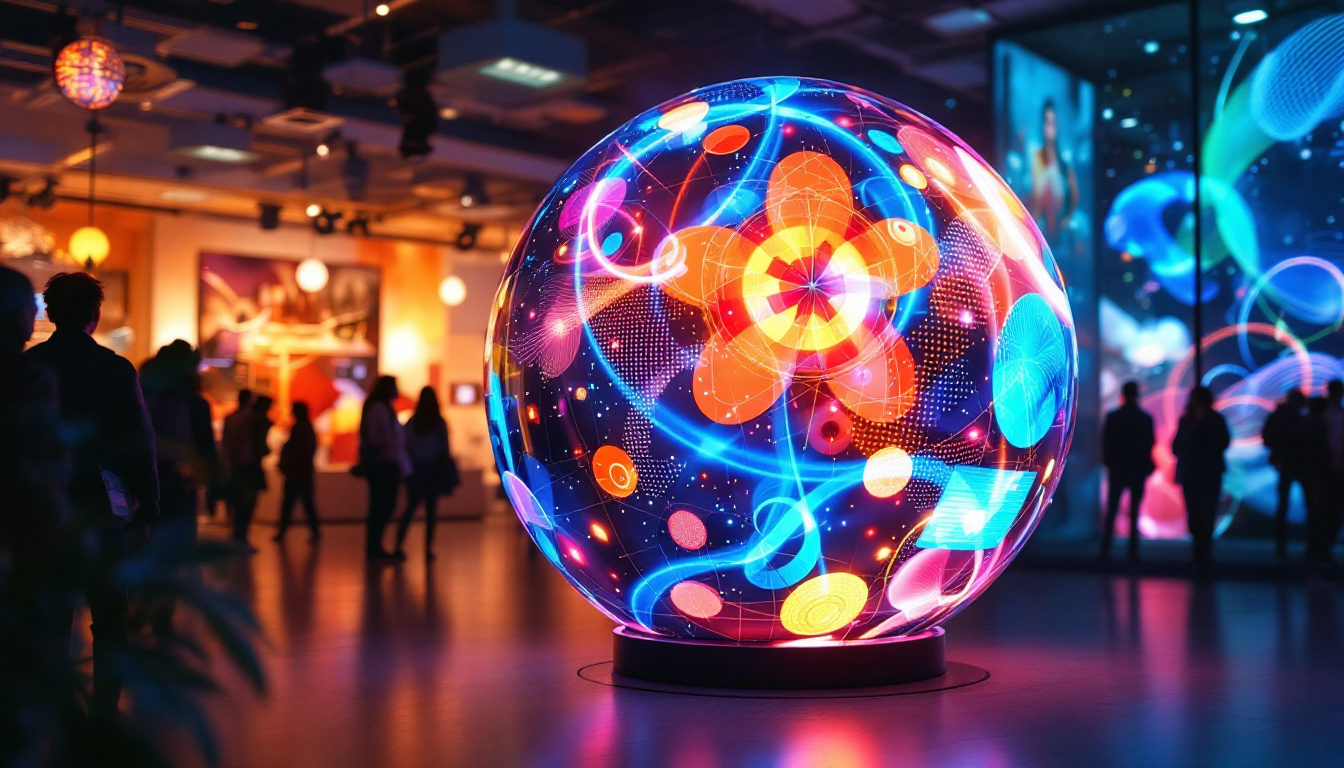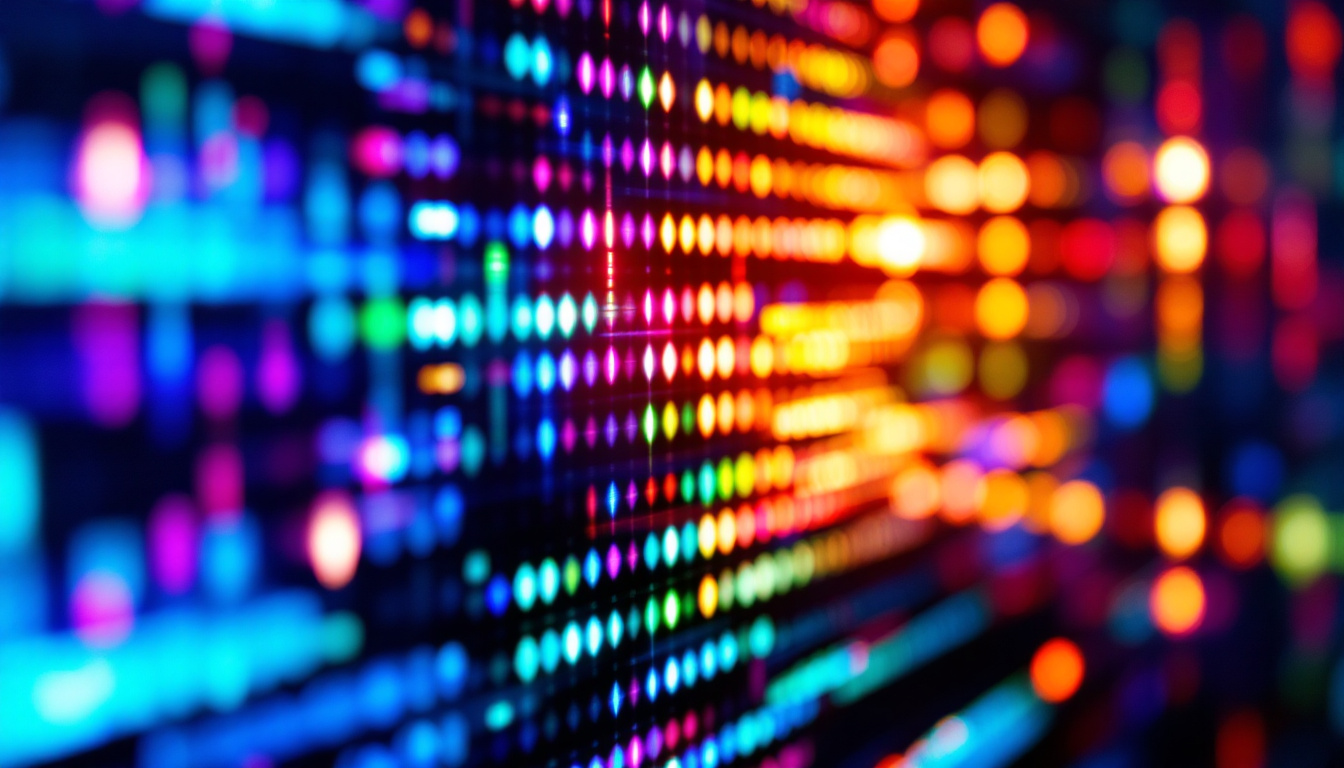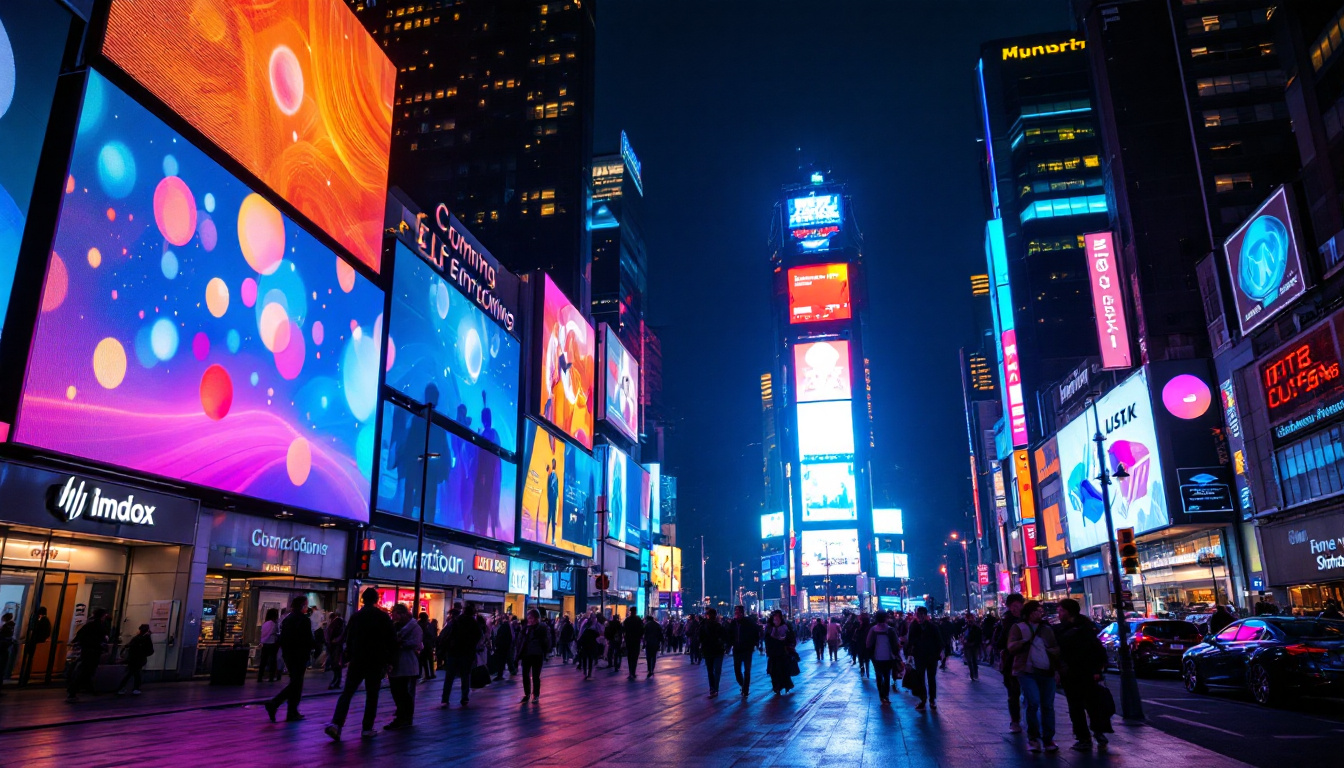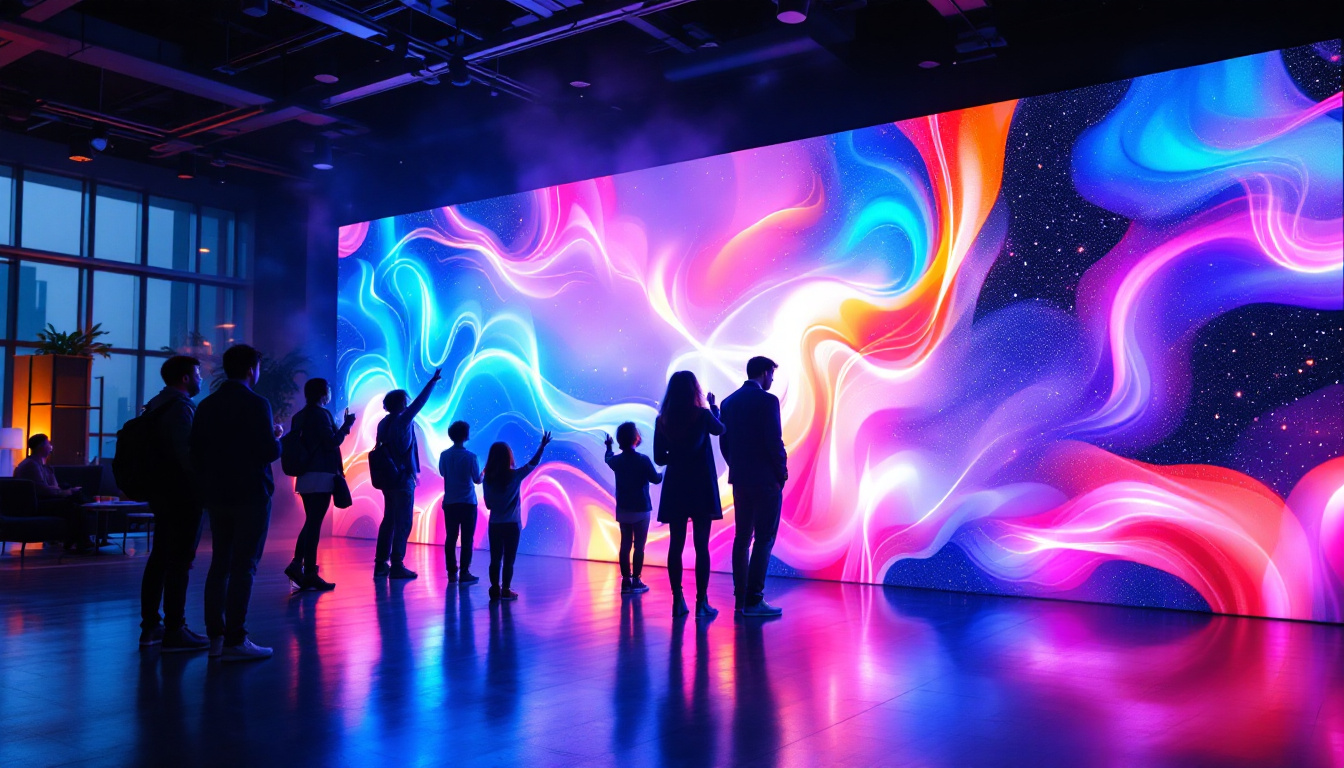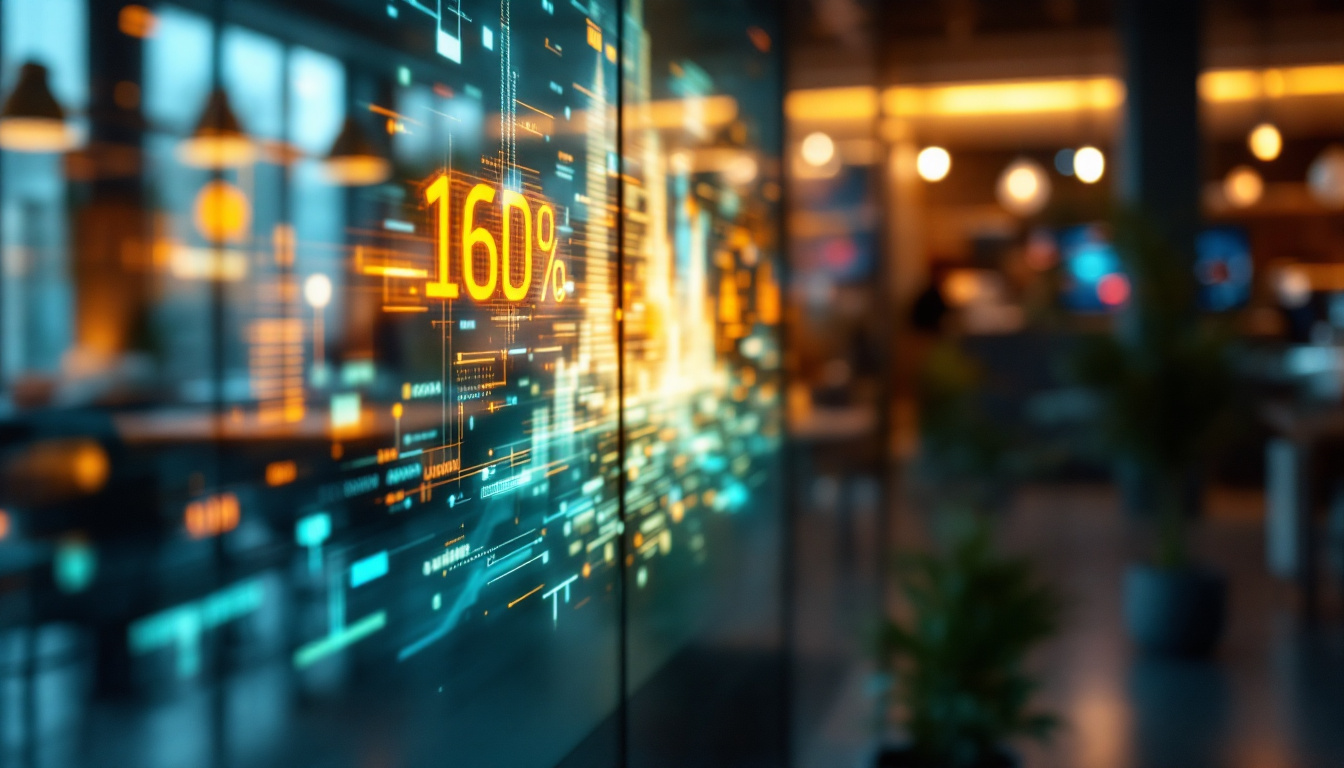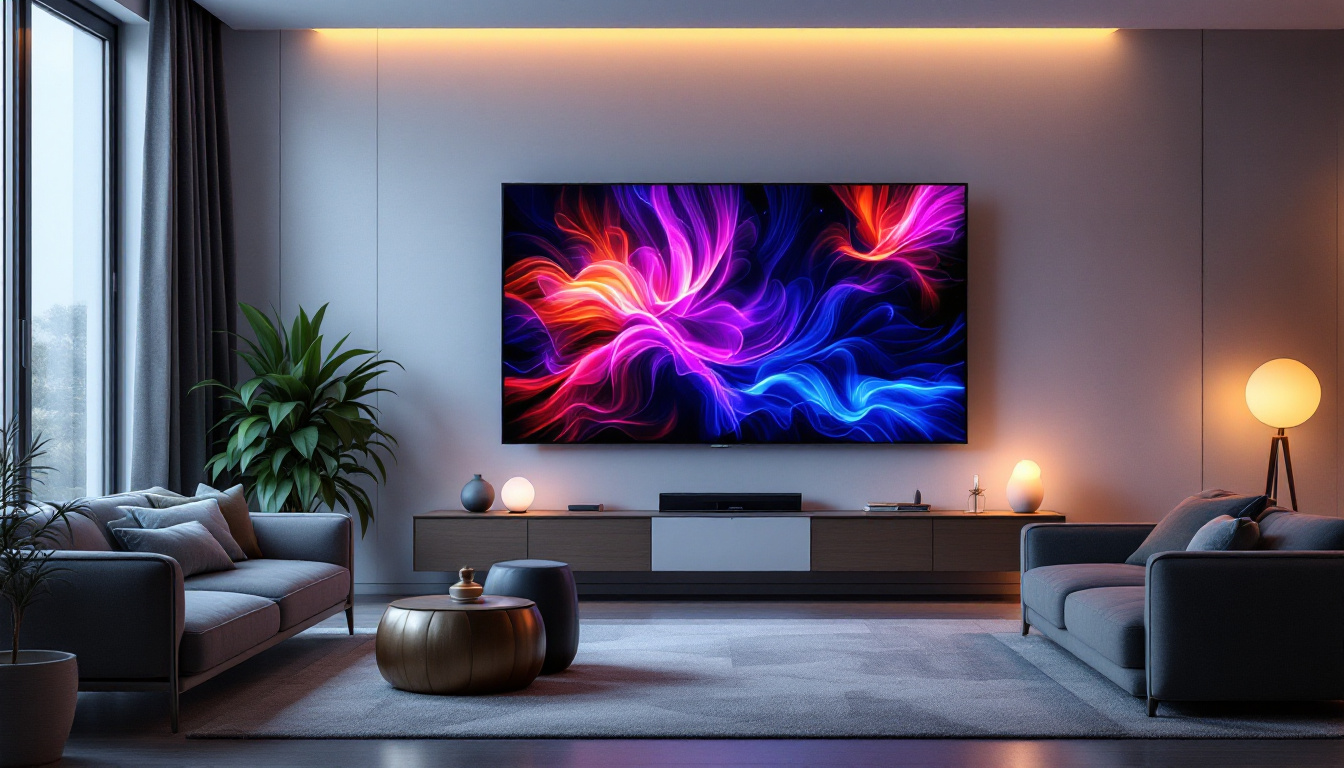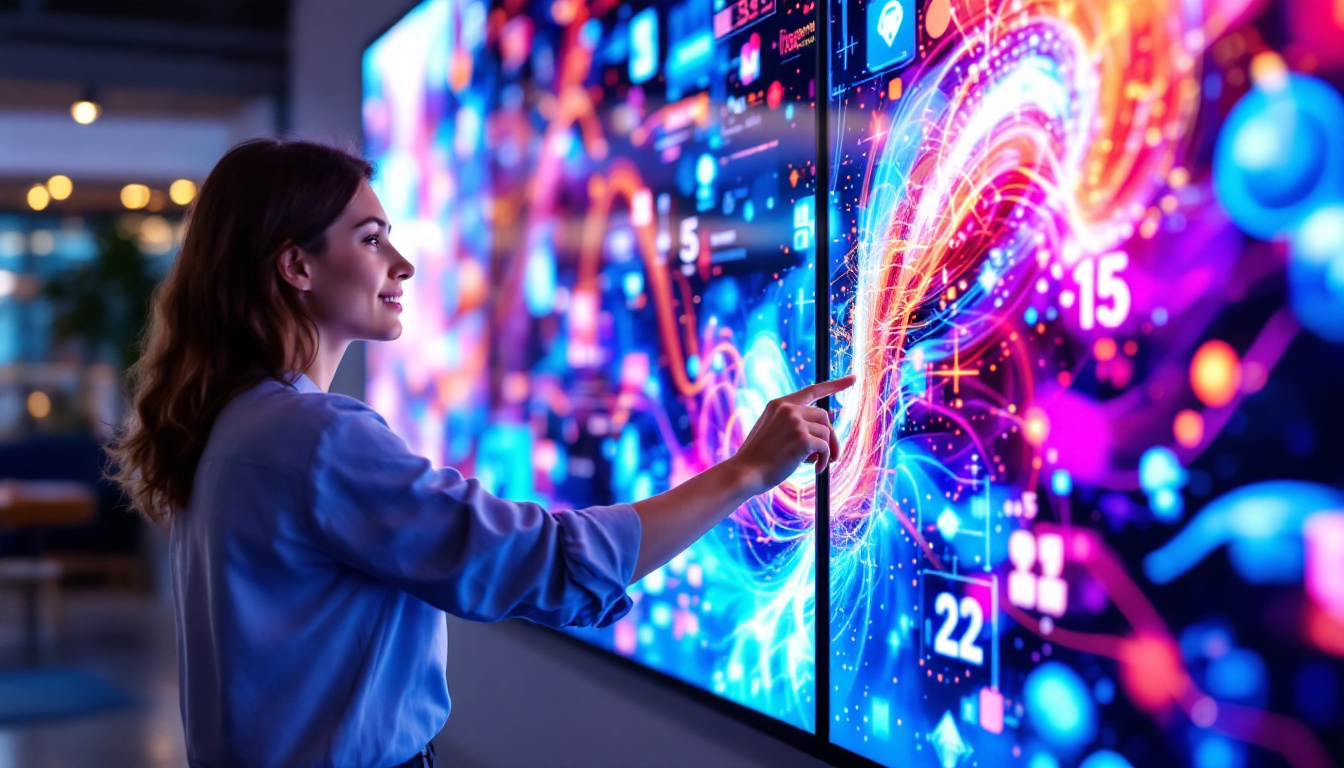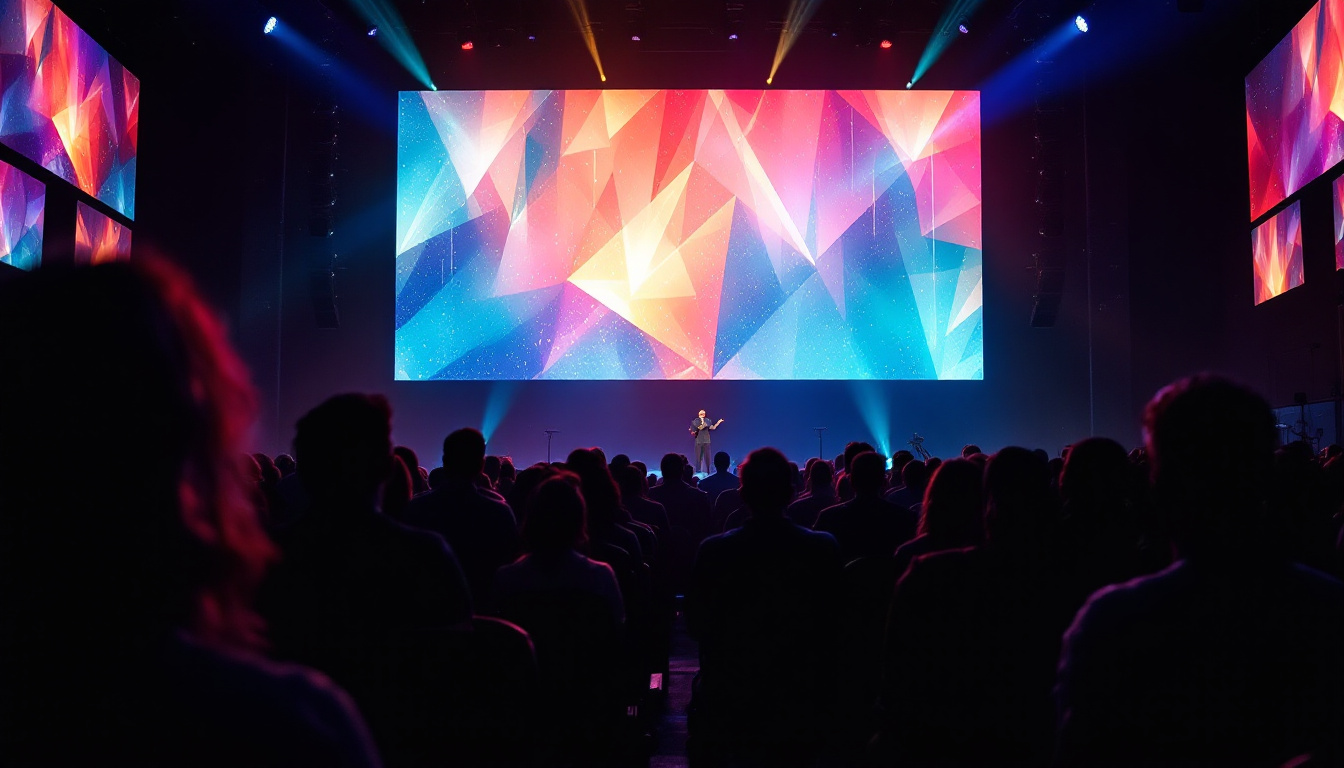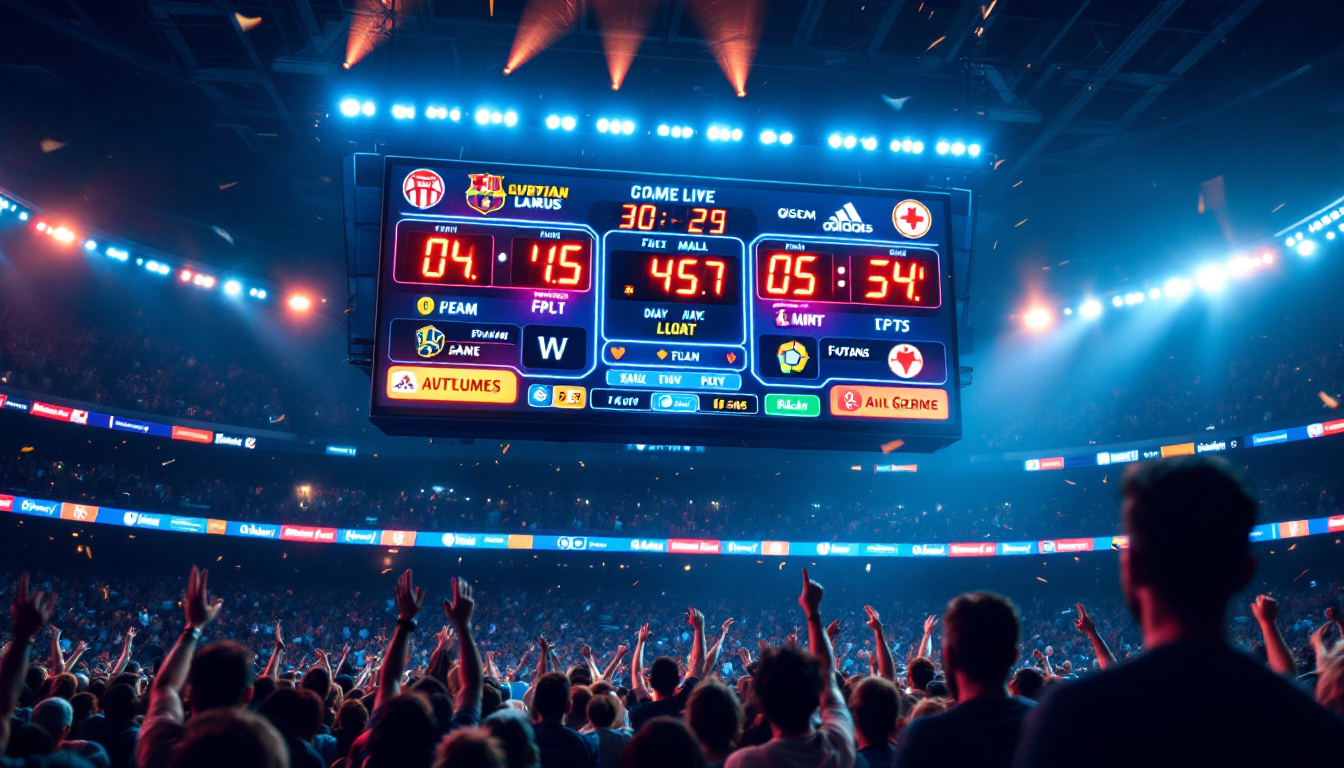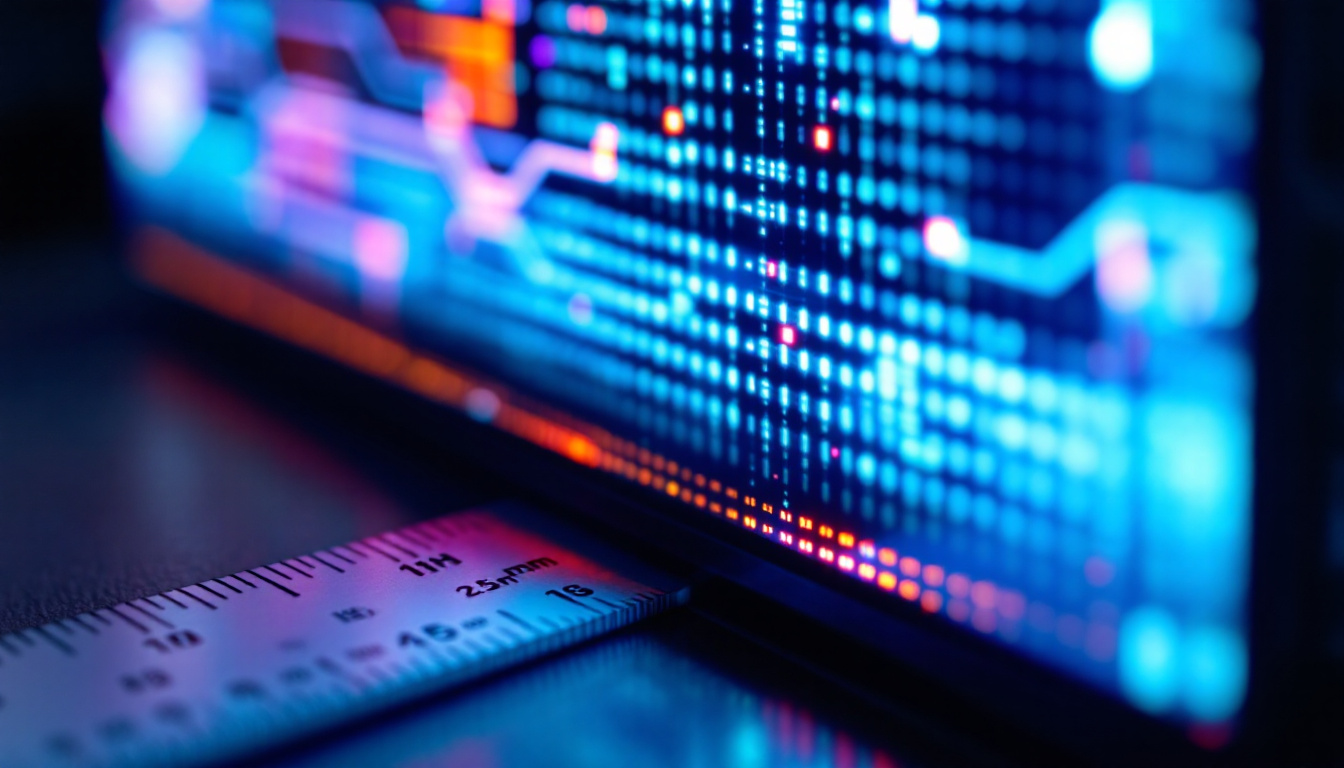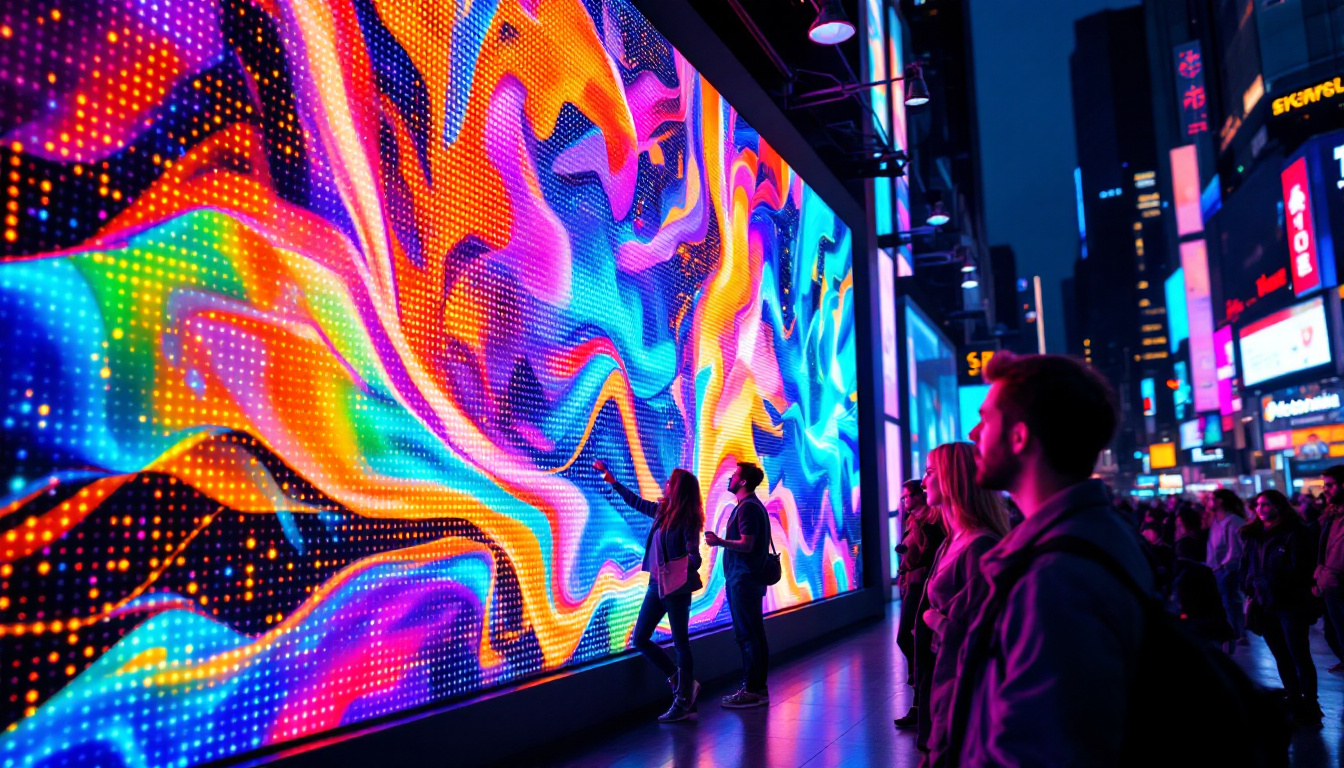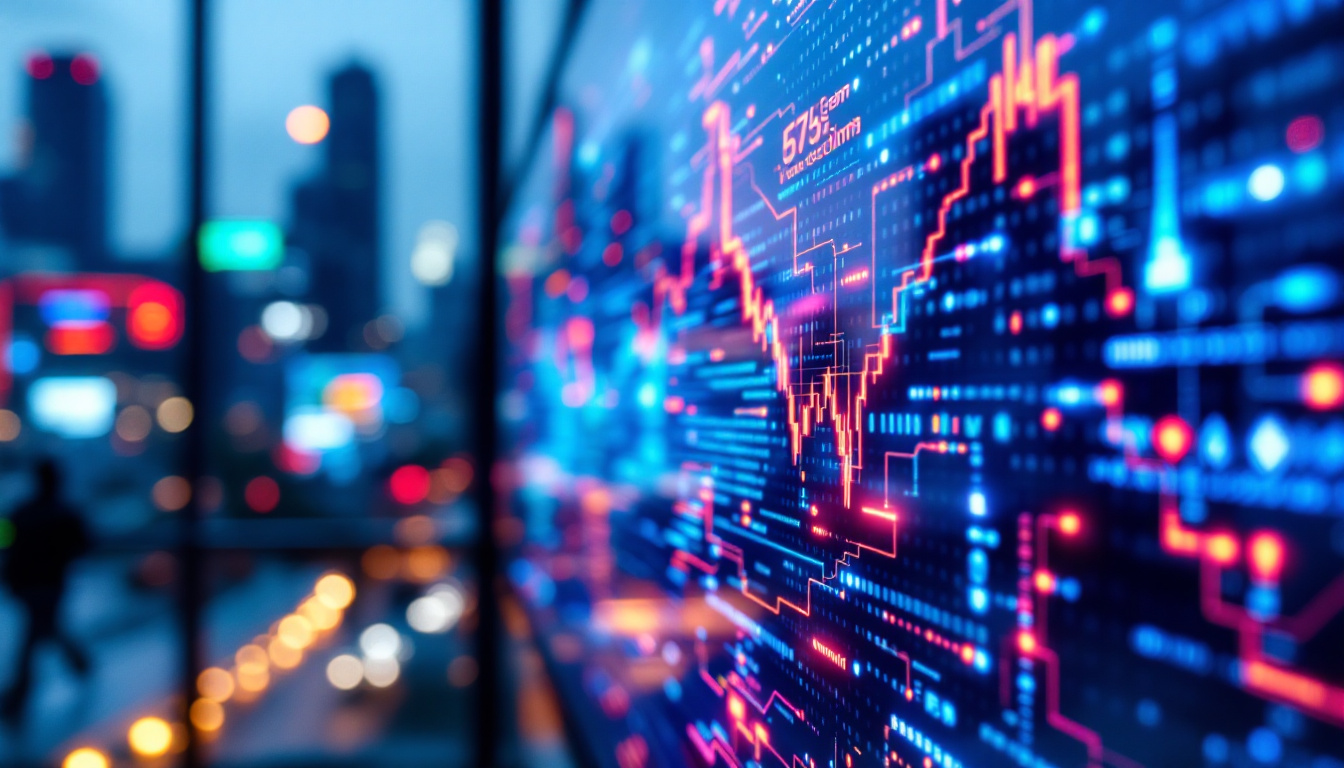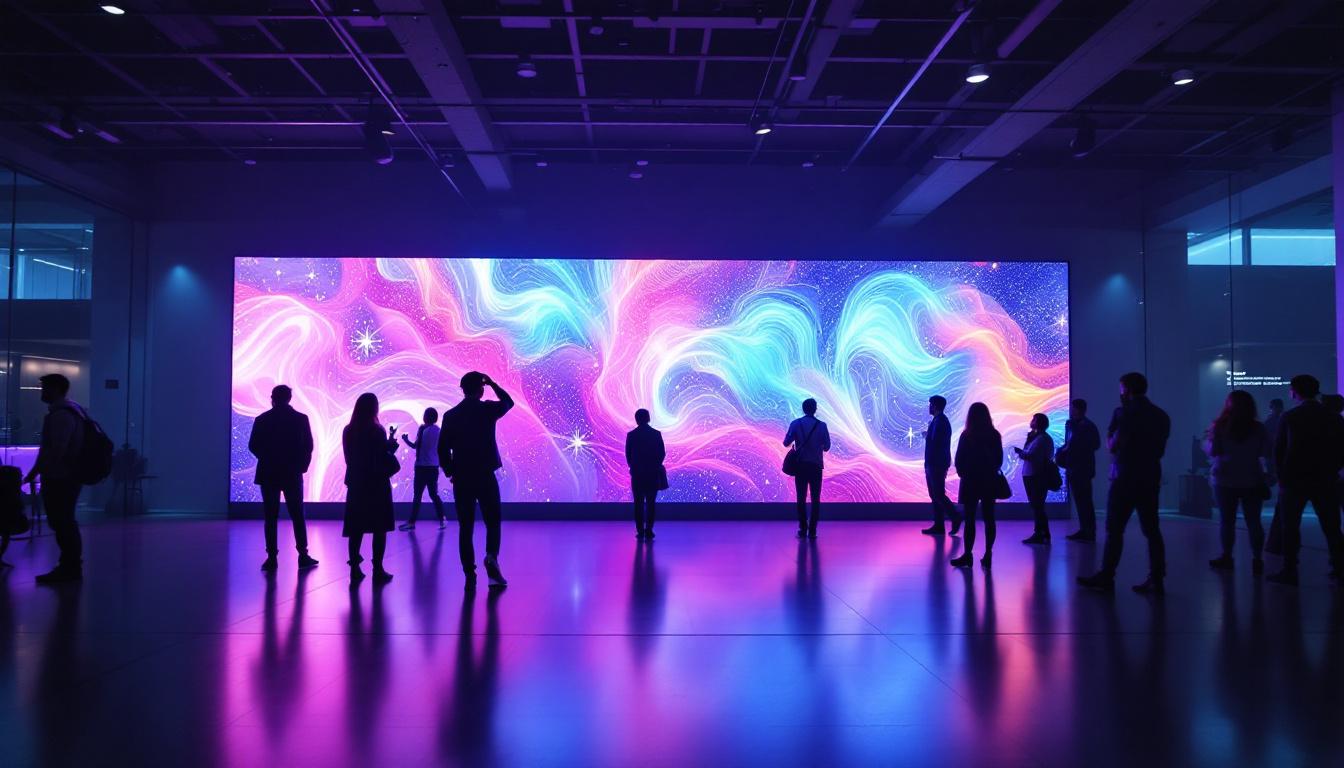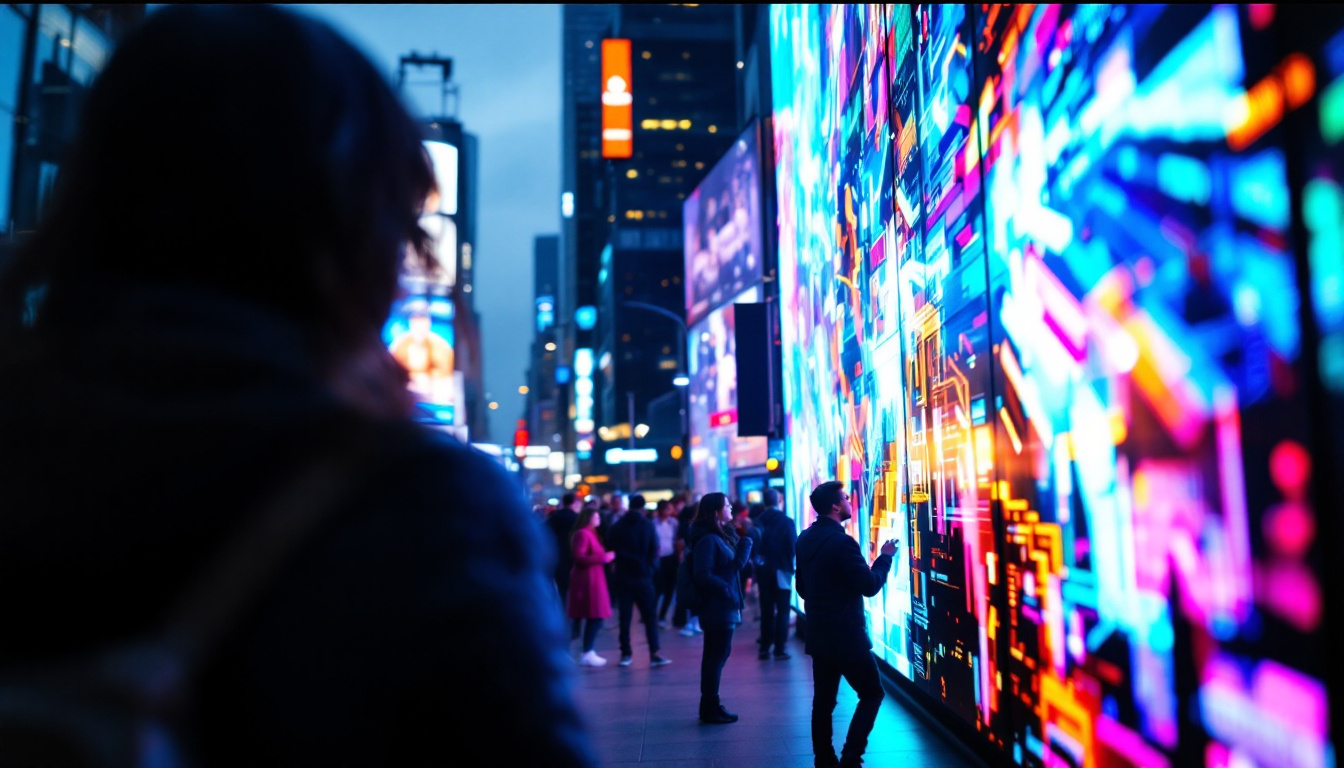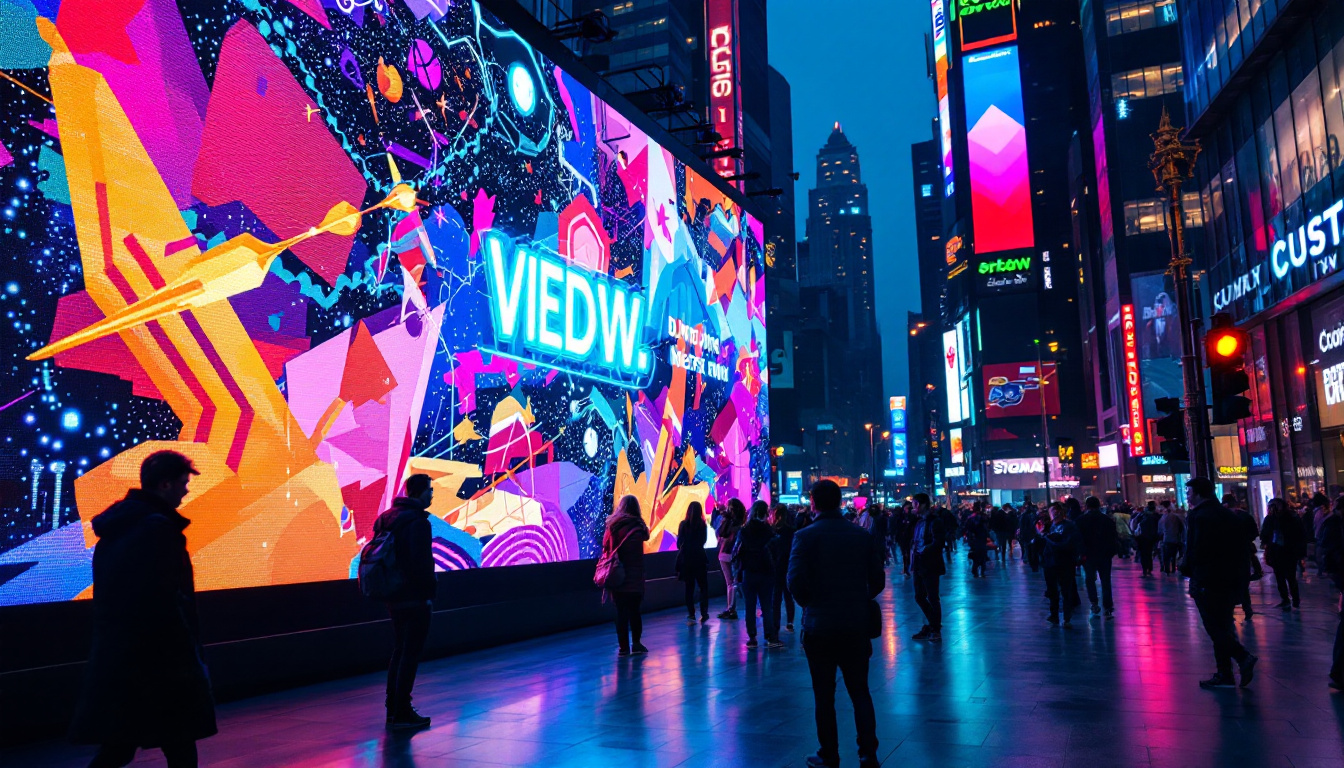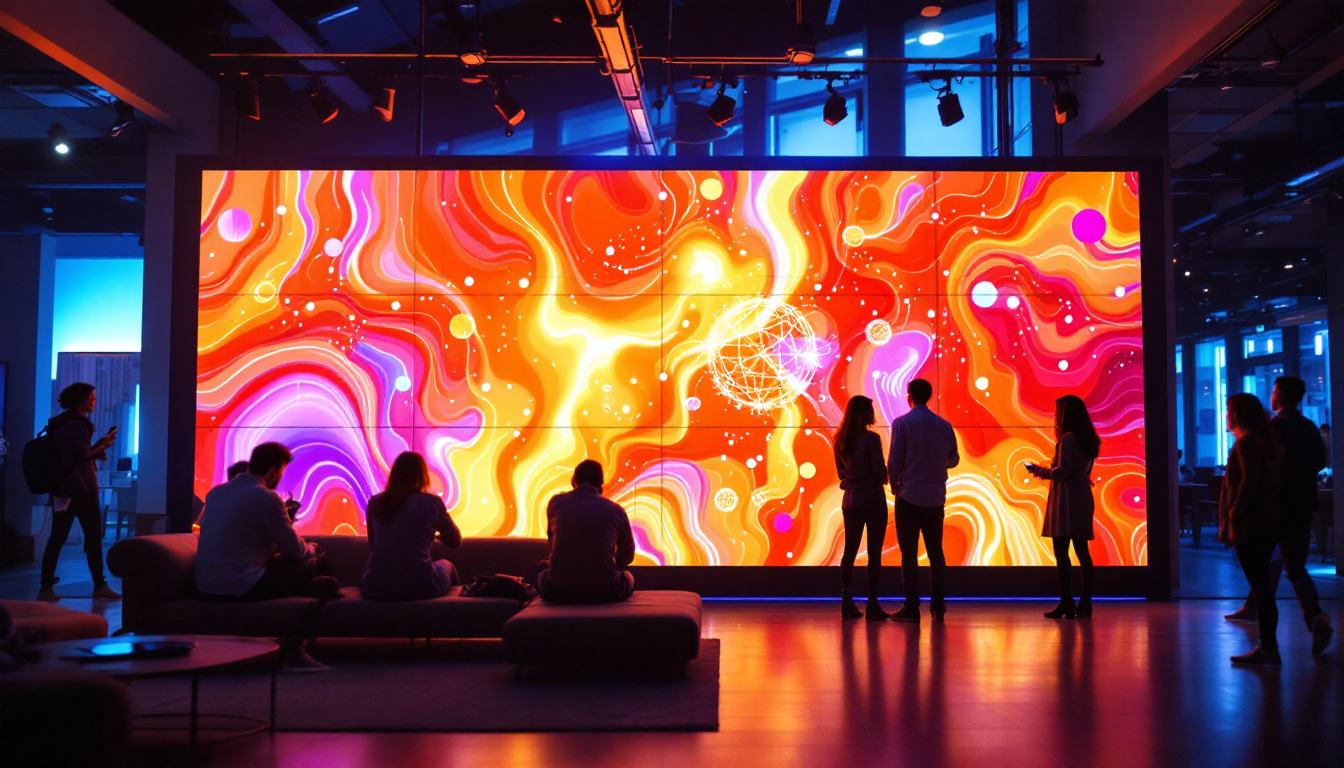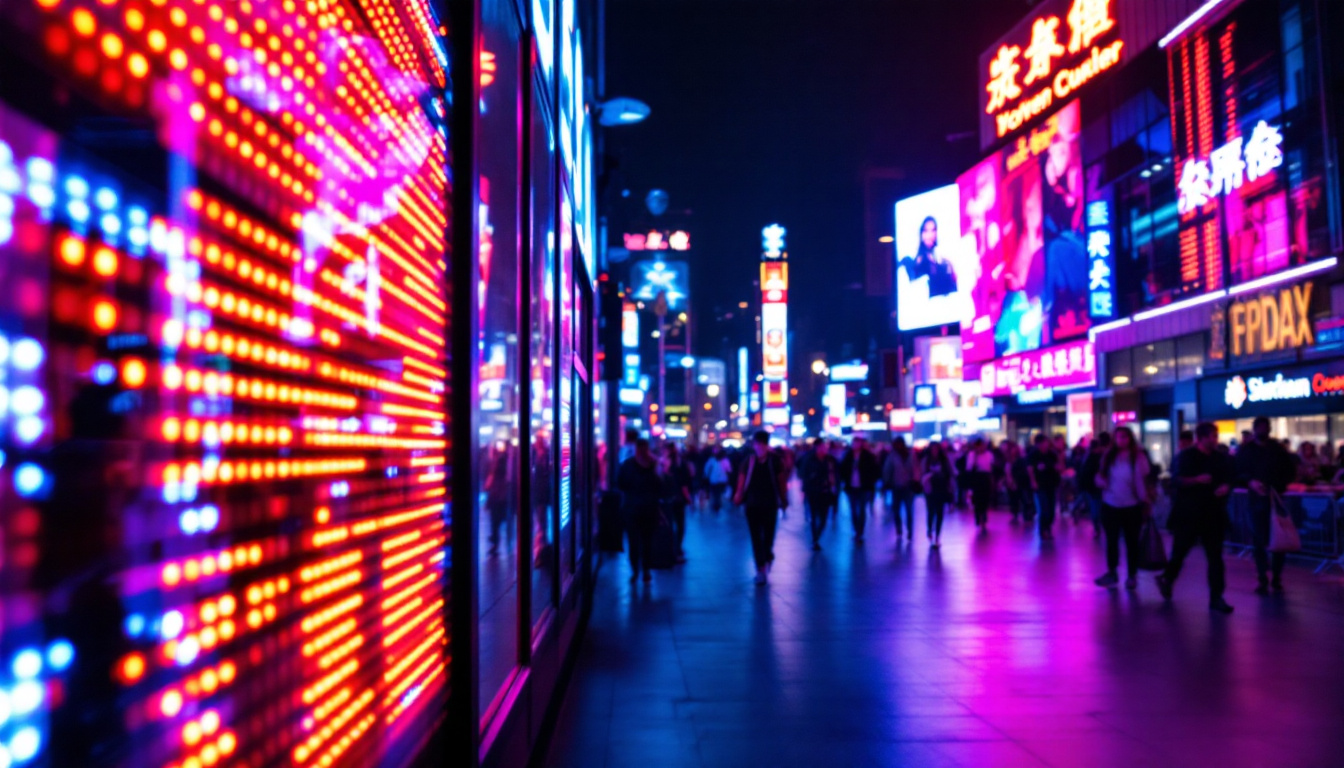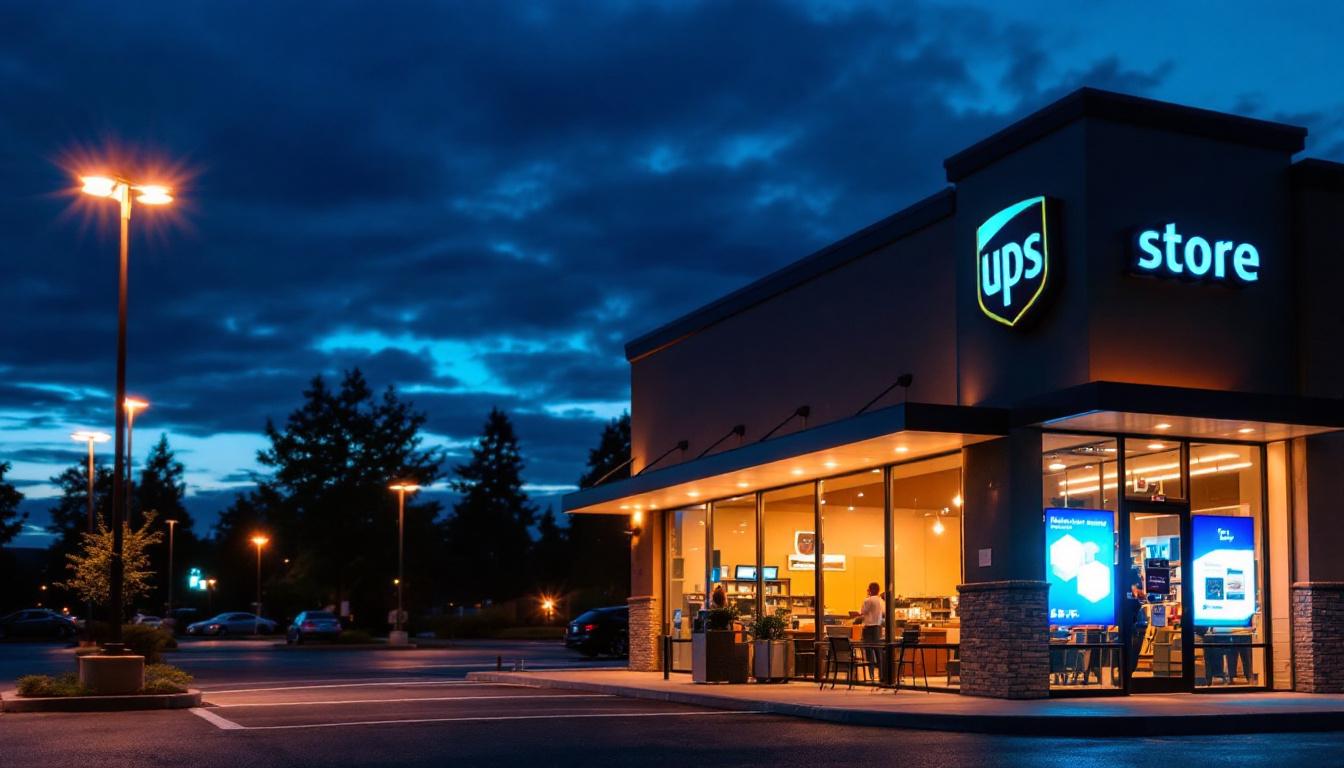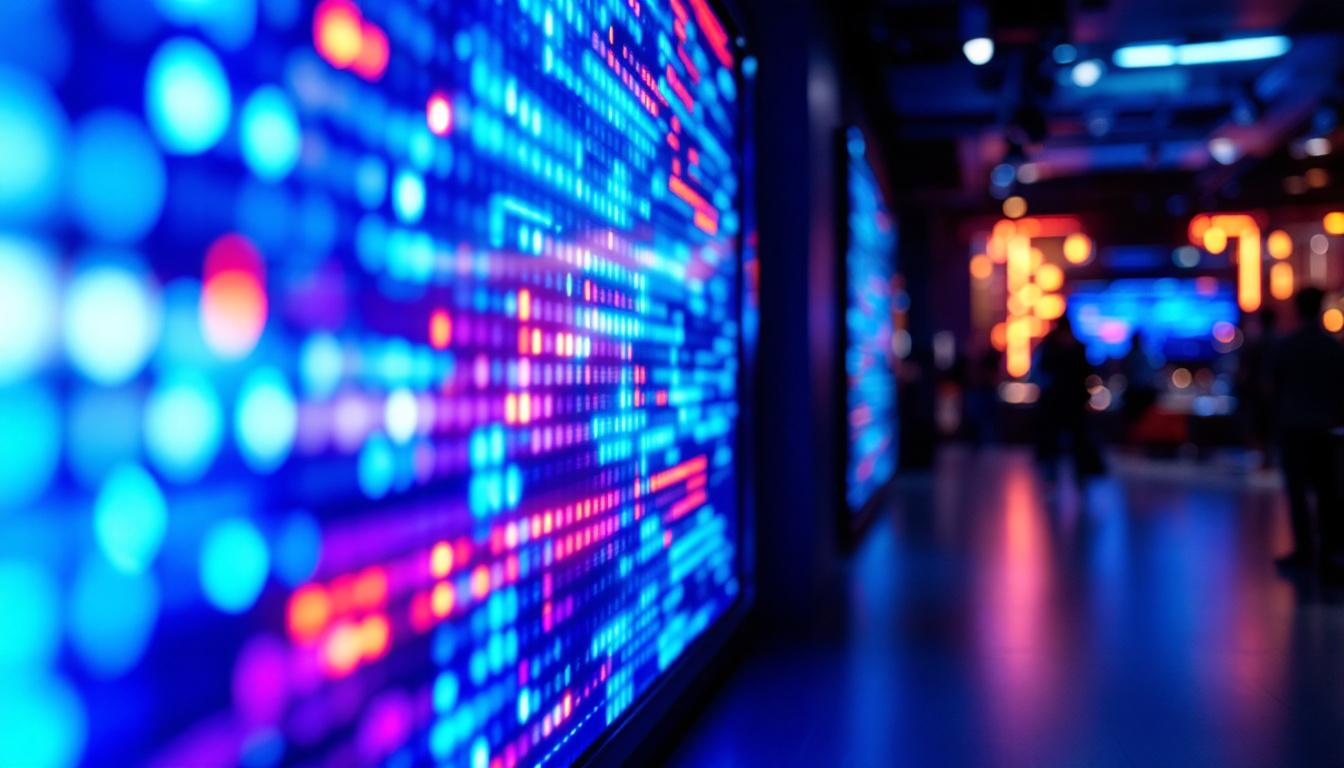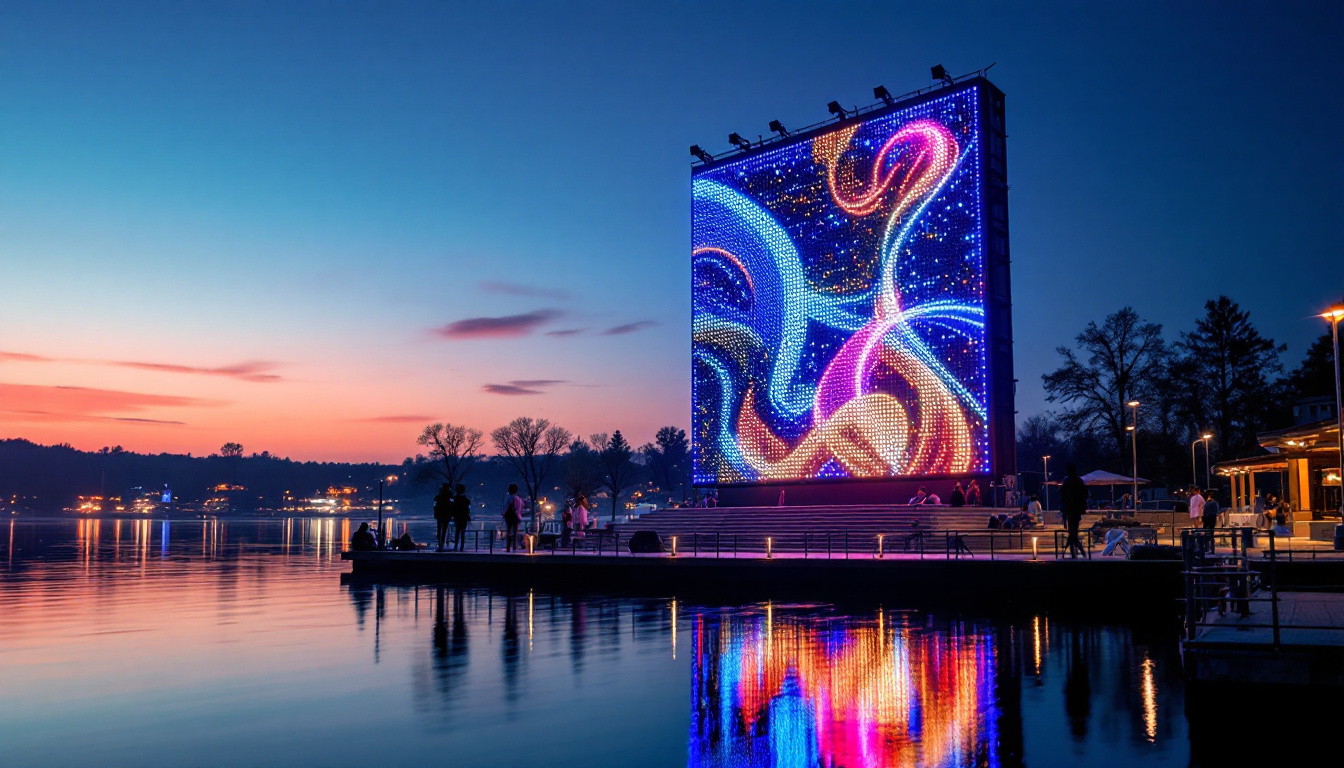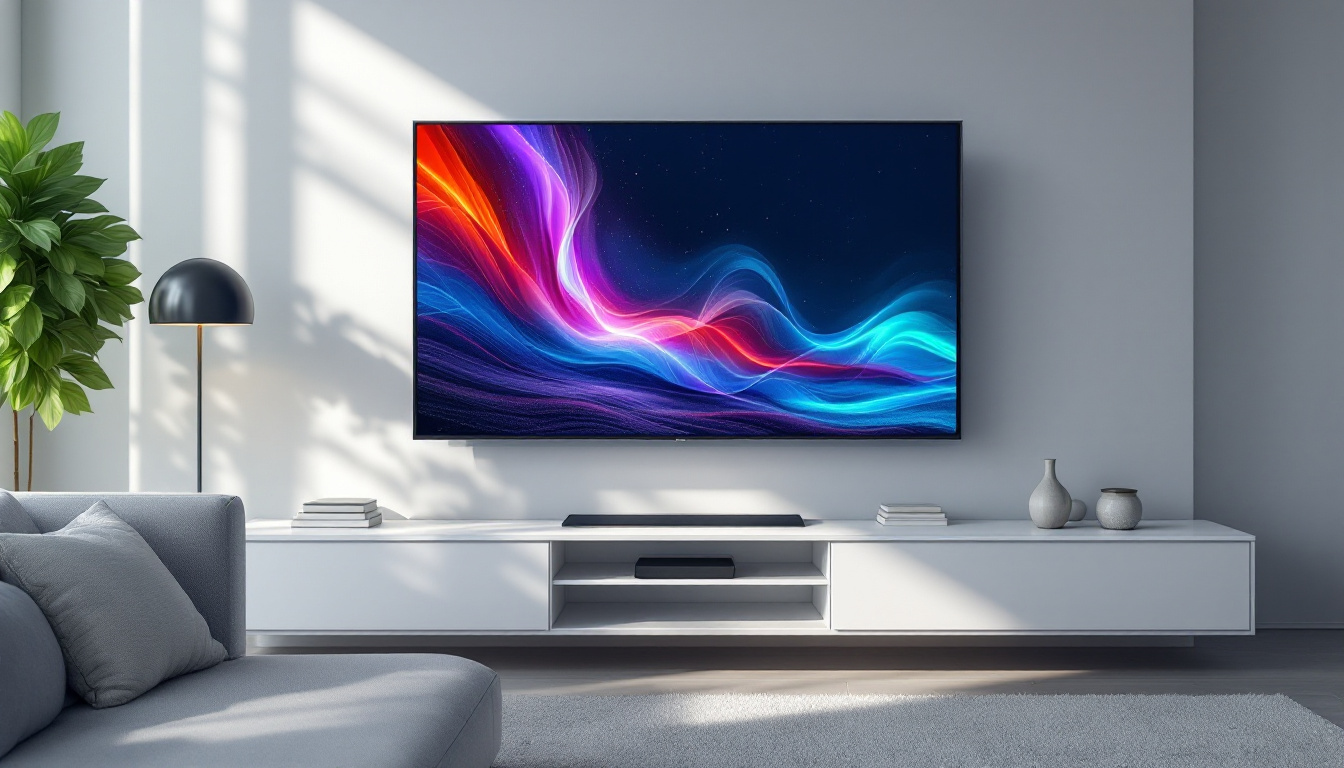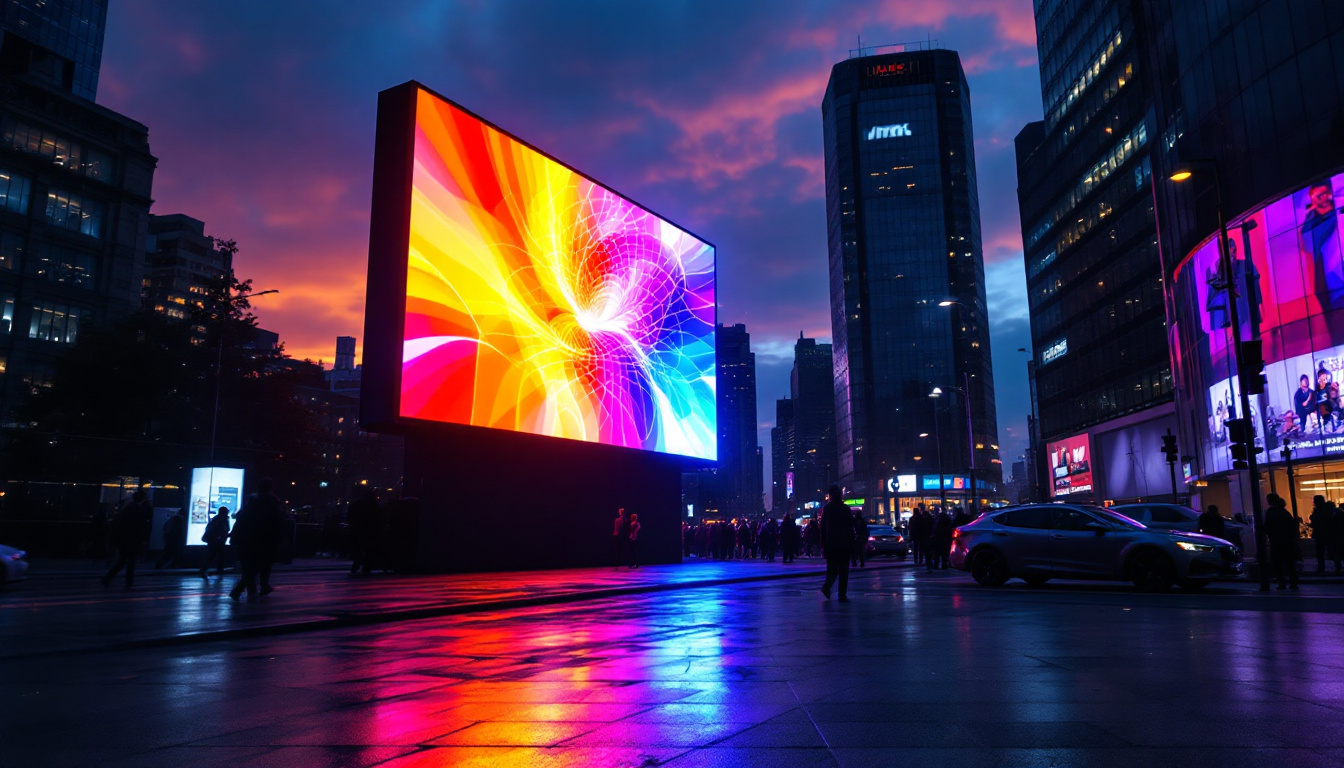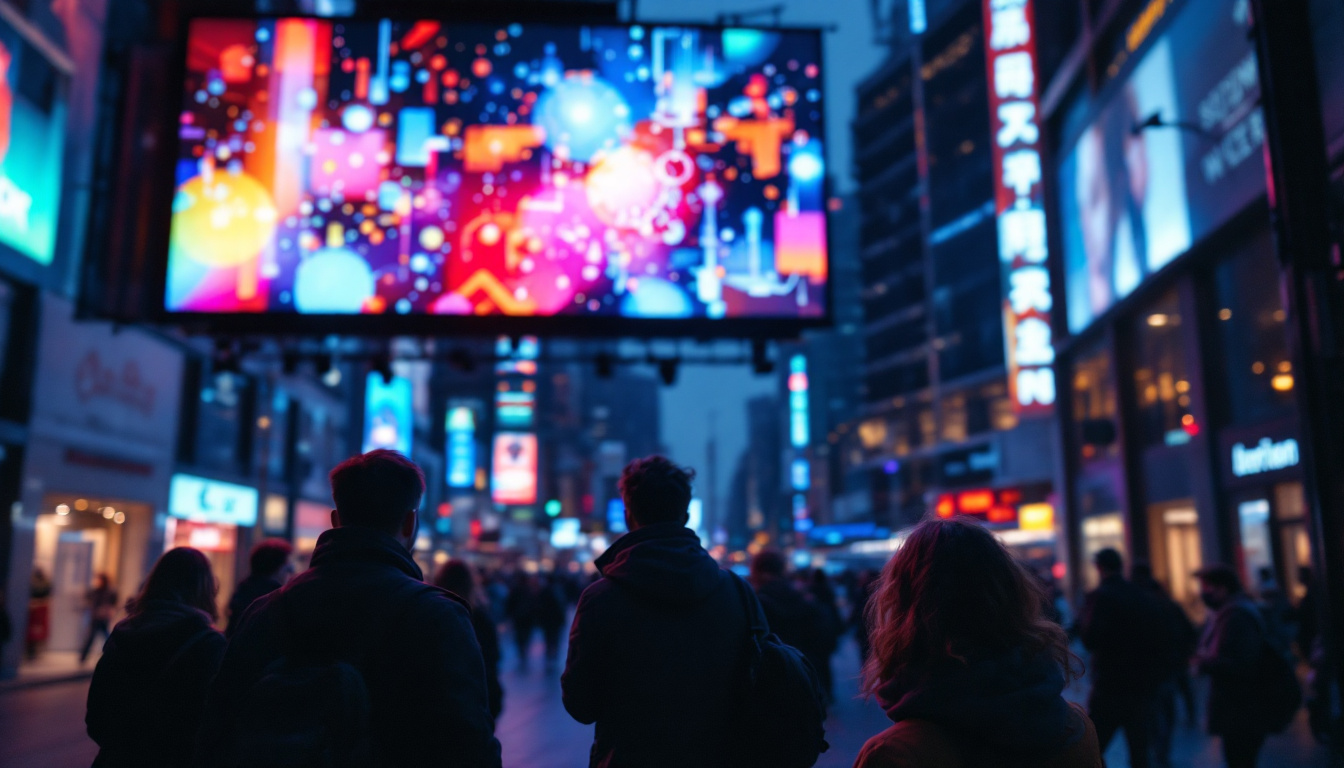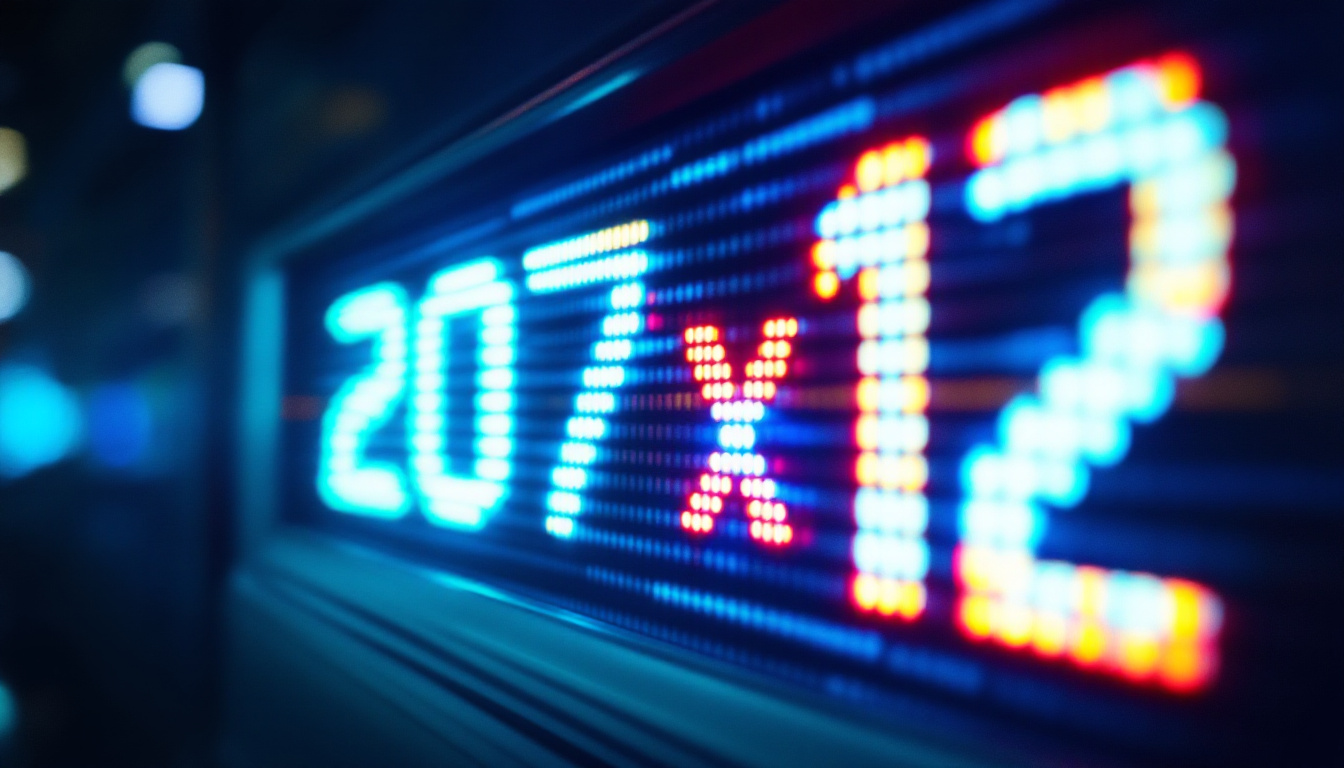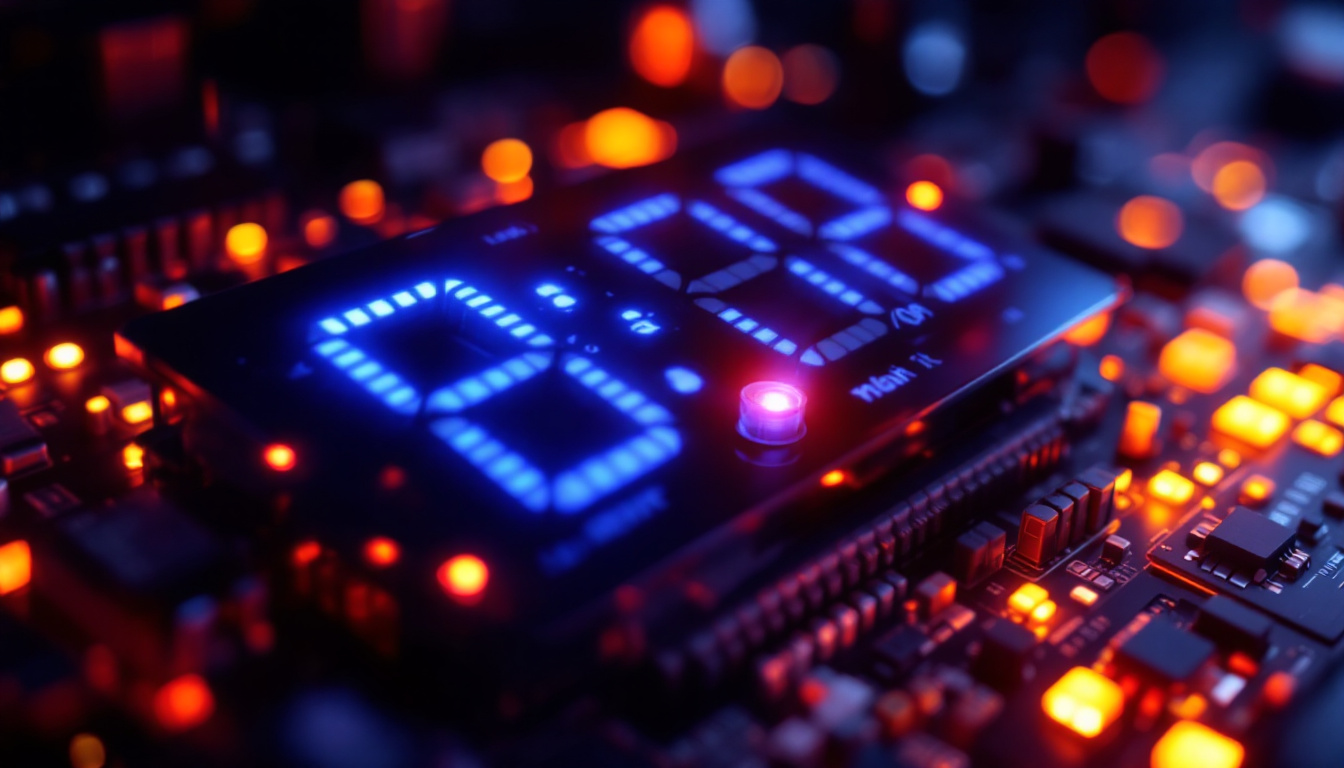In recent years, LED display walls have revolutionized the way information is presented in various settings, from corporate environments to entertainment venues. Their vibrant colors, high resolution, and versatility make them an ideal choice for businesses and organizations looking to create impactful visual experiences. This article delves into the intricacies of LED display walls, exploring their technology, applications, and benefits.
Understanding LED Technology
LED, or Light Emitting Diode, technology is at the heart of modern display walls. Unlike traditional display methods, LED displays utilize small diodes that emit light when an electric current passes through them. This technology allows for brighter, more energy-efficient displays that can be used in a variety of environments. The versatility of LED technology has revolutionized how we interact with visual content, making it a preferred choice for everything from advertising billboards to home entertainment systems.
How LED Displays Work
At the core of an LED display is a matrix of tiny LEDs arranged in clusters. Each cluster can produce different colors, typically red, green, and blue (RGB). By adjusting the intensity of these colors, the display can create a wide spectrum of colors, resulting in vibrant images and videos. The resolution of an LED display is determined by the pixel pitch, which is the distance between the centers of two adjacent pixels. A smaller pixel pitch means higher resolution, allowing for clearer images even at close viewing distances. This capability is particularly beneficial in applications such as digital signage, where clarity and impact are essential for capturing audience attention.
Types of LED Displays
There are several types of LED displays, each designed for specific applications. Common types include:
- Indoor LED Displays: These are typically used in venues such as theaters, conference rooms, and retail spaces. They offer high resolution and brightness, making them suitable for close viewing.
- Outdoor LED Displays: Designed to withstand harsh weather conditions, outdoor displays are larger and brighter, ensuring visibility even in direct sunlight. Their robust construction often includes features like waterproofing and UV resistance, making them ideal for advertising in bustling urban environments.
- Transparent LED Displays: These innovative displays allow light to pass through, making them ideal for retail environments where visibility is crucial. They provide a unique way to showcase products while maintaining an open and inviting atmosphere, blending technology with aesthetics.
The Advantages of LED Technology
LED displays offer numerous advantages over traditional display technologies. They are energy-efficient, have a longer lifespan, and provide better image quality. Additionally, LED displays are lightweight and can be easily installed in various configurations, making them adaptable to different environments and needs. The ability to create large-scale installations, such as video walls, further enhances their appeal, allowing for immersive experiences in venues like sports arenas and concert halls. Furthermore, advancements in LED technology continue to push the boundaries, with innovations such as flexible LED screens that can be curved or shaped to fit unique spaces, opening up new possibilities for creative installations.
Applications of LED Display Walls
The versatility of LED display walls makes them suitable for a wide range of applications. From advertising to entertainment, their ability to deliver dynamic content has transformed how organizations communicate with their audiences.
Advertising and Marketing
One of the most prominent uses of LED display walls is in advertising. Retailers and brands utilize these displays to showcase products, promotions, and engaging content that captures the attention of potential customers. The ability to change content quickly allows businesses to adapt their messaging based on time, location, or audience demographics. Moreover, the high resolution and brightness of LED displays ensure that advertisements are eye-catching and effective, even in bright daylight. This adaptability not only enhances customer engagement but also allows for targeted marketing strategies that can lead to increased sales and brand loyalty.
Corporate Communication
In corporate settings, LED display walls serve as powerful tools for internal communication. They can be used to display important announcements, performance metrics, and real-time data, fostering a more informed workplace. Additionally, during presentations and conferences, LED walls can enhance the visual experience, making it easier for audiences to absorb information. The integration of interactive features, such as touch screens or live polling, can further elevate the effectiveness of these displays, encouraging participation and collaboration among employees. As companies increasingly adopt hybrid work models, LED display walls can also bridge the gap between in-person and remote participants, ensuring that everyone remains connected and engaged.
Entertainment and Events
LED display walls have become a staple in the entertainment industry. Concerts, sports events, and festivals utilize large-scale LED screens to create immersive experiences. These displays can show live feeds, graphics, and animations, enhancing the overall atmosphere and engagement of the audience. The flexibility of LED technology allows for creative staging and dynamic content that can evolve throughout an event. Furthermore, the ability to synchronize multiple screens across venues or locations can create a cohesive visual spectacle that captivates audiences. As technology advances, LED displays are also being integrated with augmented reality (AR) and virtual reality (VR) elements, pushing the boundaries of traditional entertainment and offering audiences an unforgettable experience that blurs the lines between the digital and physical worlds.
Benefits of Using LED Display Walls
The adoption of LED display walls comes with a multitude of benefits that can significantly impact an organization’s effectiveness and reach.
Enhanced Visual Impact
One of the most immediate advantages of LED display walls is their ability to create stunning visual displays. The brightness and clarity of LED screens ensure that content is easily seen from a distance, making them ideal for high-traffic areas. This visual impact can lead to increased engagement and retention of information.
Cost Efficiency
While the initial investment for LED display walls can be substantial, their long-term cost efficiency is noteworthy. LED technology consumes less power than traditional displays, resulting in lower energy bills. Additionally, their durability and long lifespan mean that maintenance and replacement costs are minimized, making them a wise investment over time.
Flexibility and Customization
LED display walls can be customized to fit various spaces and requirements. They can be configured in different shapes and sizes, allowing for creative installations that enhance the overall aesthetic of a location. Furthermore, content can be easily updated or changed, providing organizations with the flexibility to keep their messaging fresh and relevant.
Challenges and Considerations
Despite their numerous advantages, there are challenges and considerations to keep in mind when implementing LED display walls. Understanding these factors can help organizations make informed decisions.
Initial Investment Costs
The upfront costs associated with purchasing and installing LED display walls can be significant. Organizations must weigh the potential return on investment against these costs. However, with careful planning and a clear strategy for use, the long-term benefits often outweigh the initial expenditure.
Technical Knowledge and Maintenance
LED display walls require a certain level of technical expertise for installation and maintenance. Organizations may need to invest in training staff or hiring professionals to ensure that the displays operate optimally. Regular maintenance is also essential to keep the displays in good working condition and to address any technical issues promptly.
Content Creation and Management
Creating engaging content for LED display walls is crucial for maximizing their effectiveness. Organizations may need to invest in content creation tools or services to produce high-quality visuals and animations. Additionally, a content management strategy is necessary to ensure that the right messages are displayed at the right times.
Future Trends in LED Display Technology
The LED display industry is continually evolving, with new advancements and trends emerging regularly. Staying informed about these trends can help organizations leverage the latest technology to enhance their visual communication strategies.
Higher Resolutions and Pixel Density
As technology advances, LED displays are becoming capable of achieving higher resolutions and pixel densities. This trend allows for even clearer and more detailed images, making them suitable for close viewing in indoor environments. The demand for ultra-high-definition displays is expected to grow, particularly in sectors such as broadcasting and high-end retail.
Integration with Smart Technology
The integration of LED displays with smart technology is another trend gaining traction. This includes the use of sensors and analytics to tailor content based on audience behavior and preferences. Smart displays can adjust brightness based on ambient light and provide real-time data analytics to measure engagement and effectiveness.
Environmental Considerations
As sustainability becomes a priority for many organizations, the LED display industry is also focusing on eco-friendly practices. This includes developing energy-efficient displays and recyclable materials. Organizations are increasingly looking for solutions that align with their sustainability goals, making environmentally conscious LED displays more appealing.
Conclusion
LED display walls have transformed the landscape of visual communication, offering a dynamic and engaging way to convey information. Their versatility, energy efficiency, and stunning visual impact make them an invaluable asset for various applications, from advertising to corporate communication and entertainment. While there are challenges to consider, the benefits often outweigh the drawbacks, making LED displays a wise investment for organizations looking to enhance their visual presence.
As technology continues to advance, the future of LED display walls looks promising. Organizations that stay ahead of trends and embrace the potential of this technology will be well-positioned to captivate their audiences and achieve their communication goals. Whether through stunning visuals, real-time data, or innovative content strategies, LED display walls are set to play a pivotal role in the future of visual communication.
Explore Cutting-Edge LED Display Solutions with LumenMatrix
Ready to elevate your visual communication and create unforgettable experiences? Discover LumenMatrix’s innovative range of LED display solutions, from vibrant Indoor and Outdoor LED Wall Displays to versatile Vehicle and Floor LED Displays. Our mission is to revolutionize your engagement with audiences through advanced digital signage that ensures your message resonates with clarity and impact. Check out LumenMatrix LED Display Solutions today and see how we can transform your space with captivating visual technology.

